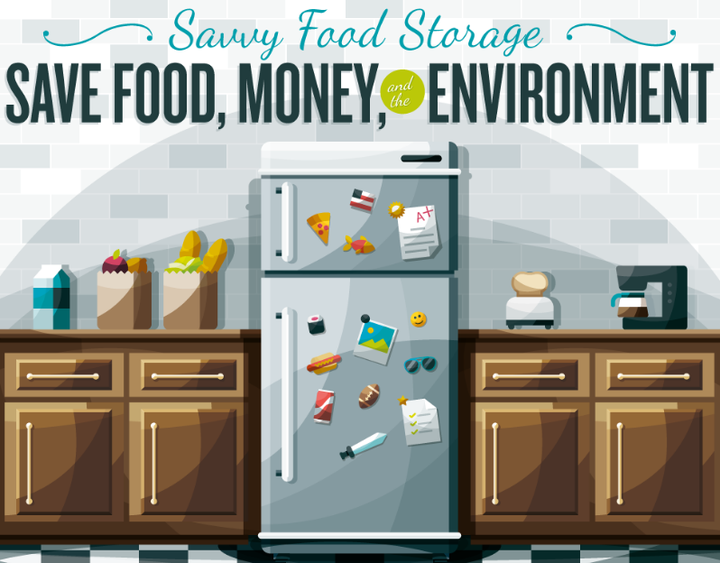
Did you know that the average American family of four throws out anywhere between $1365 to $2275 worth of food every single year? That’s a lot of extra waste going into the waste stream-it’s the single largest component of the municipal waste stream, and it produces a significant amount of methane to boot. If we all wasted just 5% less food, 4 million more people could be fed each year. That’s pretty significant. So what can you do to pitch in and reduce food waste? One simple thing that doesn’t cost you a dime is to rearrange your refrigerator and pantry.
In the refrigerator you have three basic sections: the produce drawers, the doors, and the main body. Produce should be divided up in the drawers based on ethylene output or sensitivity, and the ethylene producers should be placed in a drawer with the vents open so the gas can escape. The ethylene sensitive foods should be placed in a separate drawer with the vents closed to hold in moisture. Meat and other foods that will be cooked need to be separated from snack foods and luncheon meats that will not be cooked to prevent bacterial contamination. Milk should go in the body of the fridge and never in the door. The door of your refrigerator can’t maintain a constant temperature since it is always being opened and closed, so that is where you should put things like pickles, jam, and mustard.
There are several things you are probably putting in your refrigerator that should be kept elsewhere. Tomatoes should never go in the refrigerator, but if you must put them in there be sure to bring them back to room temperature before eating them. Peppers and cucumbers are also commonly put in the refrigerator, though they will do quite well on the kitchen counter. Melons and berries will also do just fine on the kitchen counter. Most people know to leave bananas on the kitchen counter, or even hanging on a banana hook if you want to give them an extra couple of days.
The pantry is a great place to store things like hard winter squash, potatoes, sweet potatoes, and onions. It’s important to keep your potatoes and sweet potatoes away from your onions so they won’t sprout and store them in a brown paper bag to give them a longer shelf life. You can even keep your unripened avocados in the pantry. Keep all these items in a dark, cool, well-ventilated place for maximum shelf life.
You can save a lot of money just by organizing your pantry and refrigerator more efficiently. You can also prevent food waste by planning meals in advance and only buying what you need. But if you do have something left over, try to figure out how to use it or preserve it before it goes bad. The municipal waste stream and your wallet will thank you! Learn more about proper food storage from this infographic and then get to work re-organizing your refrigerator and pantry!

